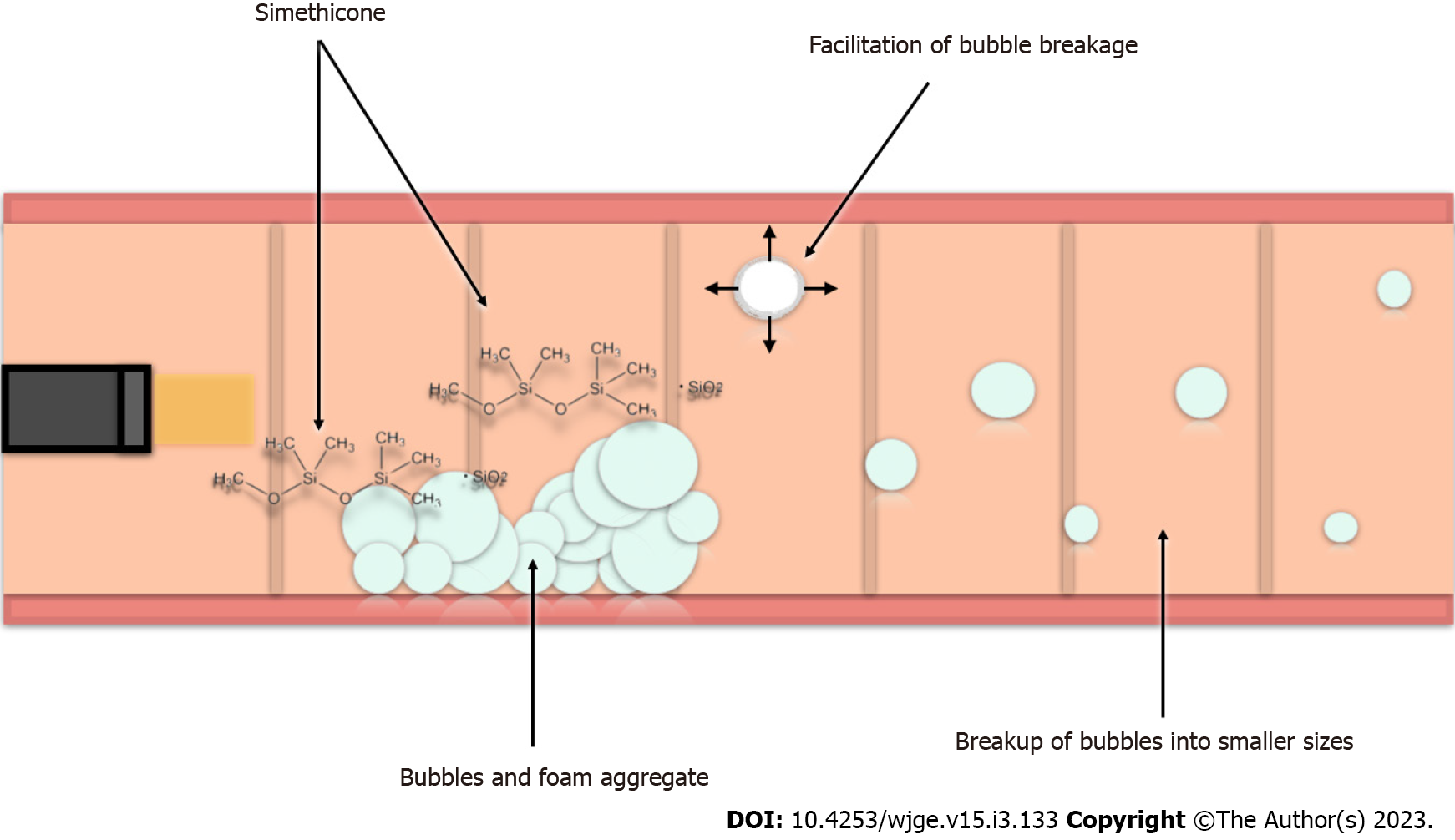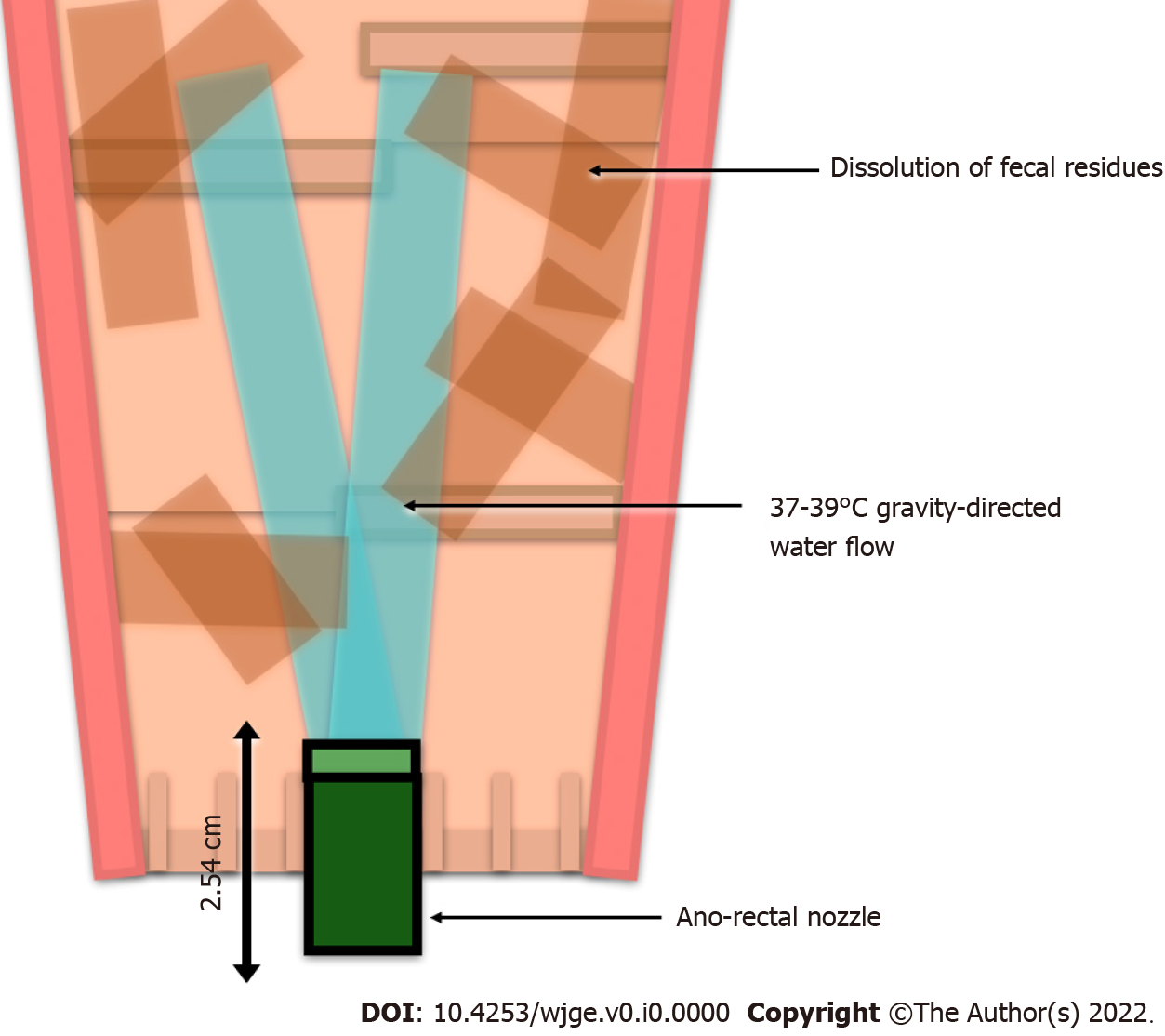Copyright
©The Author(s) 2023.
World J Gastrointest Endosc. Mar 16, 2023; 15(3): 133-145
Published online Mar 16, 2023. doi: 10.4253/wjge.v15.i3.133
Published online Mar 16, 2023. doi: 10.4253/wjge.v15.i3.133
Figure 1 Functioning of simethicone at the level of the intestinal mucosa.
Simethicone is a surfactant causing a reduction in the surface tension of intestinal bubbles. This reduction results in the aggregate of bubbles adhering to the colic mucosa being weaker with the facilitation of bubble reduction. As a result, larger bubbles are divided into smaller bubbles that have a greater ease of intestinal transit. The silicon dioxide component of dimethicone has an additional role, with an extensive molecular surface area that can promote bubble rupture. The breakdown of foam and bubbles and formed gas can be either absorbed by the intestinal wall or eliminated by intestinal transit. This likely explains the ameliorative effect on patients' symptoms.
Figure 2 Colonic lavage process.
A nozzle is inserted approximately 2.54 cm into the rectum of the patient on a disinfected stand. According to the gravity gradient, a direct flow of water is dispensed from the nozzle at the rigidly controlled temperature of 37-39 °C, with immediate termination of the procedure if this temperature is exceeded. The water flow makes the stool soft, facilitating its dissolution and elimination. The procedure is generally complete within an hour, and the patient can subsequently undergo an endoscopic examination.
- Citation: Gravina AG, Pellegrino R, Romeo M, Palladino G, Cipullo M, Iadanza G, Olivieri S, Zagaria G, De Gennaro N, Santonastaso A, Romano M, Federico A. Quality of bowel preparation in patients with inflammatory bowel disease undergoing colonoscopy: What factors to consider? World J Gastrointest Endosc 2023; 15(3): 133-145
- URL: https://www.wjgnet.com/1948-5190/full/v15/i3/133.htm
- DOI: https://dx.doi.org/10.4253/wjge.v15.i3.133














